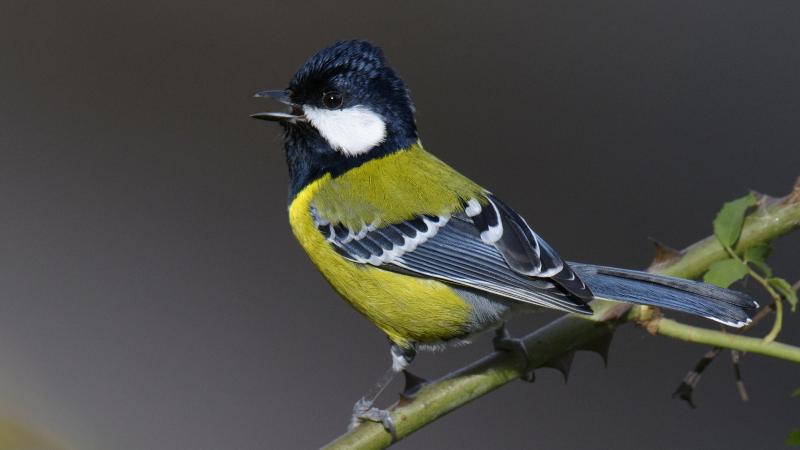
The Himalayas, famous for their lofty mountains, is also a biodiversity hotspot. There are more than 900 species of birds present in the Himalayan region; 30 of which are found nowhere else in the world. In such a diverse mountain range, scientists from the Centre for Ecological Sciences, Indian Institute of Science, Bangalore, Rheinische Friedrich Wilhelms-Universität Bonn, Germany, Department of Ecology and Evolutionary Biology, Cornell University, and Cornell Lab of Ornithology, Ithaca NY USA have studied the characteristics of one such Himalayan songbird called the Green-backed tit. The study found that males and females of these tits have different body and beak characters.
The Green- backed tit (Parus monticolus) is a small songbird distributed across the Himalayas to Taiwan, including China. As the name suggests, they have green wing feathers and a black breast stripe running vertically from the throat to their belly, similar to their sister species, the European great tits (Parus major). They are cavity nesting birds, which make their nests in tree holes. During the breeding season, females incubate their eggs in the nests while males venture out to find food.
Differences in breast stripes and beak sizes are known to exist between males and females of the well-studied European great tits. But how different are they in Green-backed tits? Can we identify the sex of these birds by just looking at their breast stripes and beak shapes? The researchers of this study have answered these questions by studying a western Himalayan population of Green- backed tits.
“There is a lot of literature on European great tits, where breast stripes are linked to their behavior. The birds with broader breast stripes are usually socially dominant and we can see these birds displaying their breast stripes during dominance interactions. Yet, we still don’t know how these stripes are useful. But we can definitely say that breast stripes are important”, says Dr. Sahas Barve from the Department of Ecology and Evolutionary Biology, Cornell University, USA
The researchers measured breast stripe characteristics like color and width in the Green-backed tits. The birds were classified as ‘male’ and ‘female’ based on these characteristics. Genetic tests from these individuals later proved that the predictions were correct 97.9 % of the time. The male birds have a characteristic dark and broad breast stripe, while the females have an ashy thin breast stripe, the study found.
Do these breast stripes play a role in mating and dominance interactions? “We really don’t know what signals these stripes provide to the receiver bird”, says Dr. Barve. “Breast stripes are definitely dimorphic but they did not correlate with body size of the males. In other words, big males don’t have big breast stripes. So breast stripes might not be a signal of male physical quality and females might not choose males based on the stripes”, he adds.
In addition to the difference in breast stripes, the study also found a difference in beak lengths between males and females. Bird beaks are known to constantly grow and provide information on what the birds eat. But, the size reduces based on the diet and usage of beaks. Interestingly, the researchers found that the males of the Green-backed tit had longer beaks in winters than in summers, while the females had a constant beak length across seasons.
“These birds are cavity nesting birds and the males feed the females during breeding season. In winter, males and females feed independently and males had longer beaks than females suggesting they are feeding on insects. In summer, which is the breeding season, the male feeds the females because of which his beak sufferers double the wear and tear, leading to the shortening of beak than the female, who incubates her eggs”, reasons Dr. Barve about this observed difference.
Although Green backed tits are classified as “least concerned” by the International Union for Conservation of Nature (IUCN), they are still exposed to habitat loss due to human activities. “Like all other Himalayan birds, they suffer from habitat loss due to anthropogenic activities. They are mountain birds not specialized for other habitats. They are currently common birds but that doesn’t mean we should be complacent and not protect the species”, says Dr. Barve, about the need for studies like this. “In my opinion, it is important to keep the common birds common. Sometimes there is almost no point in trying to save the last 3 individuals of a species, instead of investing on saving them when they are common”, he adds.
The Himalayas, being the crown of India, may not be as majestic if it lost its feathered beauties, after all!
